Archive for ‘Office Supplies’ Category
See Your Way Clear: Organize With Transparent Sticky Notes

Longtime Paper Doll readers know that I’ve had a complex relationship with sticky notes. On the one hand, in the very first month of this blog, all the way back in 2007, I railed against writing things on random pieces of loose paper in Stay Far From Floozies: Avoiding the Loose Paper Trap.
On the other hand, over the years I’ve broadened my approach. It’s not the sticky notes, per se, personified by 3M’s Post-it® Notes, that left me chagrined, but the act of writing things you want to remember on any visible piece of paper, without rhyme, reason, or organizational process. To that end, I’ve shared a wide variety of pro-sticky note posts, including:
- Organizing With Post-it® Notes: Revenge of the Floozies — Three years after coining the expression “floozies” for loose paper and casting aspersions on sticky notes, I praised the ways you could effectively use sticky notes to keep yourself organized in the office, in dorm rooms and when studying, financially, and when planning projects.
- Sticky to the Extreme: Organizing Information in Extreme Situations with Post-it® Extreme Notes — These super-powered stickies handle the extreme conditions of heat, cold, humidity while preserving powerful delivery of the message.
- Paper Doll Adds a Pop of Color with Bright & Sunny Office Supplies offered up a colorful review of the Post-it’s ten different themed families of note hues for brightening your work day.
- Paper Doll Shares 3 Quirky & Cool New Office Supplies looked at the niftiness of lined sticky notes (and devices for neatly making bullets and lines on them)
- Emerson, Angelou, Ted Lasso, Tashlich & Zen Monks: Letting Go for a Fresh Start was ostensibly about new perspectives and giving yourself a new beginning, but it also introduced 3M’s super-nifty Super Sticky Big Notes, 11″ x 11″ and 15″ x 15″ sticky notes.
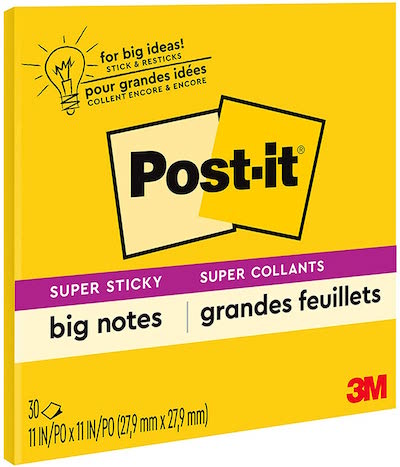
- Paper Doll Helps You Find Your Ideal Analog Habit Tracker — They may look like they’re just tiny scraps of paper, but both traditional sticky notes and specialty items (mini-lists, planners, and habit-trackers) in the Noted by Post-it® line offer cheery solutions for keeping your life organized. We looked at an expanded view of some of the Noted products in In Search of Lost Time: Productivity, Proust, and the Culture of Availability.
So, let me be perfectly clear: stickies have have a place in organizing — as long as they’re used intentionally, mindfully, and not randomly.
With all this in mind, today’s Paper Doll post explores another intriguing sticky note option reminiscent of the novelty we discussed back in 2012 when I looked a different transparent office supply solution, in Paper Doll Rolls the Highlight Reel: Removable Highlighter Tape.
BENEFITS AND USES OF TRANSPARENT STICKY NOTES
When it comes to organizing thoughts and information, I want the benefits of transparent sticky notes to crystal clear.
In case you’ve never seen a transparent sticky note, think of it as combining the functions of tracing paper and sticky notes.
Transparent sticky notes — which, to be fair, I generally more translucent or slightly “frosted” than entirely transparent — offer several benefits that distinguish them from traditional opaque ones, especially for organizing and annotating. Additionally, the notes (though not the writing) are waterproof and are generally more durable than traditional sticky notes.
Having trouble envisioning how they work? Take a peek:
Academic Uses
Transparent sticky notes are ideal for students at all levels, but particularly in high school and college, especially when studying texts where annotations are helpful or even necessary but the page or document must not be permanently altered.
Transparent sticky notes allow students to scribble questions, ideas, connections, and thoughts directly over content. The notes can be applied, easily removed or repositioned, and (if carefully stored) applied again later.
- Overlay Text or Drawings Without Obscuring What’s Beneath
Transparent sticky notes allow you to place and affix notes directly over text or diagrams without covering the printed content.
This is particularly useful for annotating books and textbooks, source documents, or presentations where you want to preserve visibility of the original material.
Science textbooks often include complex illustrations of plants, processes, or anatomical design. Students can learn a few elements at a time, add explanatory text to the overlaid sticky notes, remove the note to test themselves, and create new ones for different elements.
- Highlight and Emphasize Information
By placing a transparent sticky note over a portion of text or an image, you can use a highlighter or writing implement to highlight, annotate, or draw attention to specific details without making permanent marks on the original material.
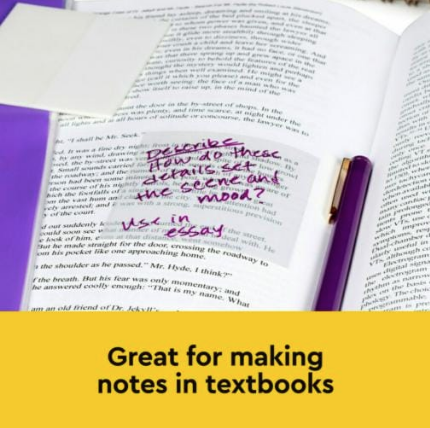
You can use a highlighter directly on a clear transparent sticky note; tinted translucent notes let you both color code concepts or categories and serve the same accenting purpose as a traditional highlighter.
Teachers can write comments pointing to specific areas of a student’s work while not damaging the masterwork, and tutors can add explanatory guidance to notes and then remove them when coaching students to remember what was on them.
Students using printed textbooks can highlight or annotate content, remove and re-affix the notes for studying and self-testing, and then re-sell the practically pristine textbook to the college bookstore after the final exam! (Yes, I know college students primarily use digital textbooks now, but they still read many novels and auxiliary books and use workbooks in traditional formats.)
- Copy content to paste into notes
Remember how I said that transparent sticky notes work like a combination of a traditional sticky note and tracing paper? Trace directly from your text book and then affix what you’ve traced into your handwritten notes.
The hand-brain connection means that students will remember the material much better from the experience of hand-tracing than they might if they only photocopied an illustration or chart.
Organizational Uses
This is an organizing blog, after all, so we should look at the organizing advantages.
- Layer for Enhanced Organization
You can layer transparent sticky notes on top of one another or over documents without losing sight of the information underneath. This can be useful in complex planning, when you want to group ideas visually without obscuring the main content.
Again, students can use layering for studying illustrations or maps, adding their notes and layering different types of content on top of the original material, with layer upon layer adding more nuance and detailed information. (I’m reminded of my 9th grade Social Studies class where, when faced with a blank mimeographed map of Africa, we had to learn (and later fill in on subsequent weeks), the country names, then the capitals, then the colonial influences, and the top exported product. I could have really used transparent notes, but regular Post-it® Notes hadn’t made it to our school supplies yet!)
- Reorganize Ideas Easily
One of the great benefits of traditional sticky notes is that you can move them around, but again, transparent/translucent sticky notes augment that benefit. They allow for more flexible, real-time organization of thoughts, whether they’re used on a document or handout, the page of a textbook or workbook, or even on a large-format item like a map, poster, or whiteboard.
Improve Every Stage of a Project
When you work (or study) in a creative field, your work often has many iterations. Having an overlay for things that aren’t (yet) perfect gives you flexibility to be creative without fear of losing a creative draft or burst of genius.
- Clear the Way for Creative Work
Transparent sticky notes can help for artists, designers, and creators who need to annotate their thoughts without hiding underlying sketches or design elements. Create temporary markups and adjustments without altering the original work.
Musicians might create an overlay with the conductor’s suggestions written on an angle, above or below the measures, bars, and notes.
- Collaborate and Brainstorm
In collaborative environments — picture a Mad Men-style creative team or a garage band figuring out how different instruments and vocals might come together — transparent sticky notes enable participants to add thoughts or ideas on top of shared content, whether on a design, blueprint, or lyric sheet.
The ability to make changes without altering the original fosters more flexible brainstorming sessions without fear of losing track of the original document or a sequence or flow of ideas.
Who else might use transparent sticky notes?
The unique properties make transparent sticky notes a versatile option in various context. In addition to traditional students and teachers in an academic setting, who else might use these notes?
- Authors — Most authors now edit galley copies of their books digitally, directly in PDF files. However, editing that way isn’t always comfortable. Writers might choose to make notes (on clean copies of their galleys or even printed drafts) and then highlight changes on transparent stickies.
- Memoirists — Reading your own handwritten journals to help document the history of your thoughts and actions? You probably don’t want your 2024 handwritten notes directly on the pages of your circa-1981 Snoopy diary, but overlaying transparent sticky notes helps the you in the present engage with the you of the past.
- Researchers — When faced with a variety of primary sources that can’t be doodled upon (or when you don’t have access to a copy machine but would prefer to handwrite your notes layered over a document), a transparent note can help you make a deeper connection between your thoughts and the original work than taking notes on a computer or pad of paper.
- Book reviewers — Whether you review books professionally or just for Amazon or Goodreads, it’s helpful to have your contemporaneous thoughts while reading and your highlighted quotes at the ready. If you find marking up books to be almost sacrilegious, transparent stickies are a great option.
- Cooks — Some people take recipes in cookbooks as gospel; others like to “doctor” things up. If you were experimenting as you went, you might not want each changed variable to be written onto the original recipe, but you’d still want to track the changes you made until (or even after) you achieved delicious perfection. TheKitchn blog post This Mind-Blowing BookTok Trend Will Change the Way You Use Your Cookbooks is a bit hyperbolic but does show the use case in action.
- Attorneys — Boilerplate contracts are in computers, and paralegals make the revisions digitally as instructed. But most lawyers can be seen reviewing photocopies of contracts and mocking them up with revisions. Transparent sticky notes would let them see the original contract language, highlight relevant passages, and make revisions; similarly, they might use transparent notes to help them accent points in transcribed depositions and testimony they want to refer to in court.
- Spiritual adherents — Whether you participate in some kind of formal Bible study or just like reading holy texts from any of a variety of comparative religions, you probably don’t want to scribble your thoughts in the (or any) “Good Book.” Use transparent sticky notes to highlight and annotate questions, feelings, or motivational elements.
- Crafters — Whether you’re trying to map colors for a needlepoint project or adjust the measurements on a pattern, writing directly on the instructions or designs can get messy, especially if you need to revise your notes. A transparent overlay lets you adjust without the mess.
How might you use a transparent or translucent sticky note?
CHALLENGES PRESENTED BY TRANSPARENT STICKY NOTES
While transparent sticky notes offer many benefits, they do have some downsides to consider.
Potential for Residue
Some brands of transparent sticky notes might leave a slight residue, especially if left on delicate surfaces for an extended period. (Bibles and textbooks from before the1950s tend to have pages that are as thin as tissue paper.)
Obviously, this varies depending on the quality of the adhesive used, and higher-end (and honestly, brand-name) versions will typically avoid this problem. If the book or document you’re using is delicate, test it on a back page, like in the glossary or index.
Adhesive Strength
Transparent sticky notes may not be adhere as strongly as traditional opaque sticky notes, particularly on rougher surfaces. Unlike the recycled paper of traditional sticky notes, the slightly slick material used to make transparent sticky notes makes the notes more durable but the adhesive may be less durable. This means they might peel off more easily, especially on surfaces that aren’t perfectly smooth or when the notes are repositioned (or applied, removed, and re-applied) multiple times. Again, test them.
Writing Challenges
Depending on the material, certain pens and markers may not write as well on transparent sticky notes. This can limit their functionality (compared to traditional paper-based sticky notes) if you (like Paper Doll) prefer one specific type of pen. Again, brand-name versions are likely to allow a greater variety of pen use; Post-it® shows multiple examples of workable writing implements.
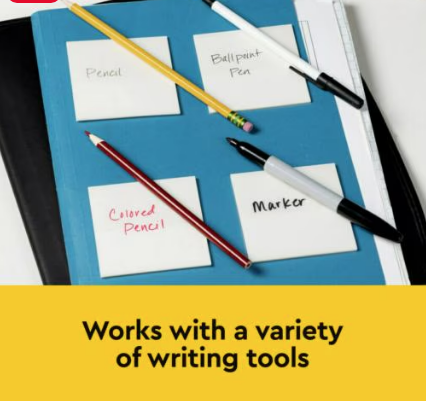
Less Absorbent Surface
Unlike paper sticky notes, which easily absorb ink, transparent sticky notes are usually made from plasticky or filmy material, like stiff, glossy tracing paper. This can cause ink to smear or take longer to dry.
Most of the TikTok videos I found on the topic are in agreement that mechanical pencils, ball-point pens, and markers work best, and that water-based highlighters and pens are the least effective. If you use markers or gel pens, especially if you also intend to highlight what you’ve written, be sure to let the ink dry thoroughly before touching or highlighting.
Limited Color Options
While some transparent sticky notes come in pastels and neons, they usually lack the range of vibrant colors available with opaque sticky notes, especially the myriad Post-it® colors. This can limit your ability to color-code effectively when organizing ideas. You can easily find colorful options, but perhaps not your preferred color schemes.
Glare and Reflection
Due to their transparent nature, this kind of sticky note may glare under certain lighting conditions, making them more difficult to read or see clearly in brighter environments or on glossy surfaces.
Cost
Transparent sticky notes, whether brand name Post-it® versions or generic, tend to be slightly more expensive than their opaque counterparts, so if you’re on a budget or need a lot of them, the cost could be a drawback.
If you’re using these sticky notes for creative, academic, or professional purposes where clear visibility is key, these downsides may be manageable. However, for heavy-duty or everyday use, traditional sticky notes are usually going to be more practical.
VARIETIES OF TRANSPARENT STICKY NOTES
According to the website, Post-it® Transparent Notes come in 7 varieties, all with 36 notes per pad (though I was able to find an additional 10-pack of the clear version at Staples.com for a whopping $26.46)!
- original transparent (clear) pad ($7.29 at Staples.com or $5.35 at OfficeSupply.com)
- a two-pack with one original clear pad and one blue pad
- a three-pack assortment (pink, orange, and green) pads ($12.59 at Quill)
- a five-pack assortment (purple, orange, pink, blue, and green)
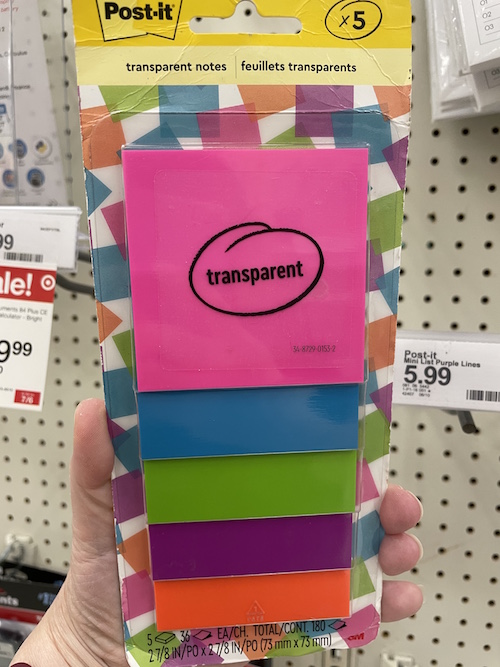
- an eight-pack with four clear pads and one pad each of orange, pink, blue, and green
- an eight-pack with two pads each in blue, pink, green, and orange ($14.99 at Amazon)
Paper Doll Shares How To Select a Shredder, Shred Responsibly, and Save

Much of the following post originally appeared in 2021 and has been updated for 2024 with current product links and shredding discounts.
Klop. KaKLOP! Klunkety klunkety. KaKLOP! Grrrrrr uggggggg. KaKLOP!
No, unlike the officer at U.S. Strategic Command (STRATCOM), I haven’t let a tiny human take over my keyboard. The above is a close approximation of the sound my shredder made last weekend when, after two decades of faithful service and about halfway through shredding documents no longer necessary for tax time, it gave up the ghost.
At first, I thought I might have just fed one too many staples into the grinding teeth of my little document destruction devil. But, when I lifted the shredder from the bin and turned it over, nothing was stuck in the teeth. However, as I shifted the up-ended shredder motor from my left hand to my right, I could hear something sliding back and forth within. Ruh-roh!
Far more curious than mechanically inclined, I took a screwdriver to the whole housing unit, wondering if I might be able to just stick something back in place. (Yeah, go ahead and laugh.) Sadly, I found that a large octagonal metal washer (for want of a better description) had broken completely in half. The wheels on this bus were NOT going to go round and round any longer. I had to buy a new shredder.
DIY SHREDDER ESSENTIALS
Although I haven’t had to purchase a shredder in a long time, this is not my first shredding rodeo. Many of my clients find themselves either buying a first or replacement shredder as part of our work when we’re organizing and purging paper. So at least I knew what I needed to consider.
I hate to be crude, but size matters: the size of your shredder unit, the size of your “shreds,” and the size of the pile (or capacity) you can shred at one time.
Shredder Unit Size
There are three general sizes/types of shredder units: mini, medium, and heavy-duty.
Don’t buy a mini.
Yes, I know, regular readers of this blog recognize that I rarely invoke absolutes; the world is far more grey than black-and-white. However, unless you are buying a shredder for a child, I want to discourage you from buying a mini, or desktop, shredder.
Paper Doll Shares 3 Quirky & Cool New Office Supplies

Being organized and productive is about systems and skills. Too often, we’re tempted to believe that the ideal box or tub or app is the key to getting us where we want to be in our journey toward success. That’s actually a big fib that our perfectionist brains tell us, pushing us to procrastinate and not get started until everything is ideal.
That doesn’t mean that products can’t be useful and motivate us to embrace our systems or practice our skills. Sometimes, what we need to up our game is something that’s unusual or comes out of left field.
Last week, I encountered this colorful doggie.
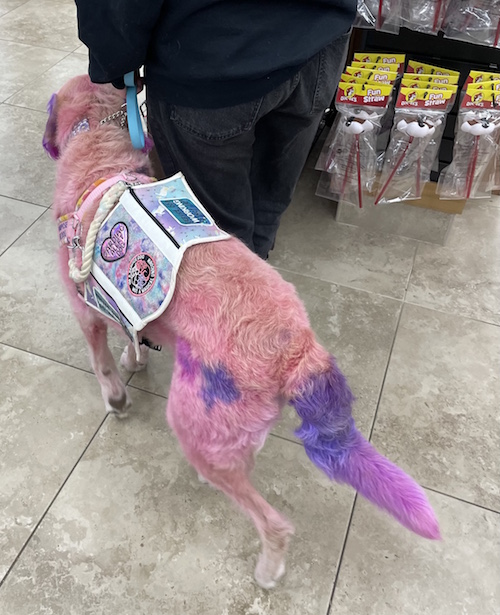
Understandably, what caught my attention was the cotton candy, tie-dye pink-and-purpleness of this little fella. It was only later that I looked carefully at the harness and saw that this is a cardiac alert dog, a service dog at work. (One of the badges on the harness notes that he is “Not a Magical Unicorn.”)
A worker-bee (or, in this case, worker dog) is useful, but there’s no reason it can’t also be quirky or different. To that end, today’s post looks at a few of the intriguing products I’ve seen recently that perform their tasks as designed but are also just a little bit unusual, enough to pump up our interest.
I’m not suggesting you have to purchase them. Rather, I’d like to encourage you to think about what features (color, form, style) appeal to you so that when you’re faced with tools and options in your life, you’ll stop to think whether you’re dazzled by the aesthetics, full stop, or whether it’s something you will actually use.
STICKY NOTE TO-DO LIST STENCIL
As with most of the quirky products I’ve found recently, this originally came to my attention via TikTok. A company called FTBT 3D Prints (short for Fix This Build That LLC) created the Sticky Note To-Do List Stencil for those who want to turn their blank, unlined sticky notes into checklists.

I appreciate the inclination. I start every day with a sticky note following my 1-2-3 approach to productivity. I have one big task (usually something I’ve been avoiding), two medium tasks, and three small tasks — all aside from things I would do everyday anyway, like checking and replying to email.
These help me focus on getting the most important and urgent work done. It doesn’t mean I won’t accomplish other tasks, just that I absolutely will complete the tasks I’ve set as essential.
The Alternatives
You may be wondering, why can’t someone just draw their own lines and/or check boxes/circles? Well, they absolutely can; indeed, that’s what I do every day on my sticky notes! Yay, me!
But there are some people who are more inspired by aesthetics than others, who want (to the point of needing) things to look good in order to feel right. I dislike the idea of feeling like everything has to be “perfect” in order to get started. However, if you are frozen in amber, inertia blocking any action, because things aren’t pretty, I am not going to spend eons trying to break through that obstacle with you. Another approach is needed. Sometimes, just getting started and making progress is necessary before you can fix the things that usually block you.
You might be thinking, OK, then why not buy the sticky notes that already have lines on them? You could definitely do that, too. There are a wide variety of generic sticky notes with lines, and a sub-set of those have check boxes (though, for some reason, many are rectangular rather than the traditional square), like these Gazelle sticky notes for $14.99 for a package of 400 notes.
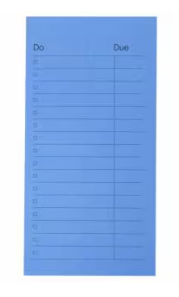
Given this, I am cautiously optimistic about recommending consideration of the Sticky Note To-Do List Stencil.
The Stencil
Each square stencil, suitable for any standard 3″ x 3″ sticky note, is manufactured from polyactic acid (PLA) filament, an eco-friendly plastic alternative made out of renewable resources.
The stencils come in ten colors: Ink Black, Radiant Red, Citrus Orange, Sunny Yellow, Emerald Green, Sky Blue, Royal Blue, Plush Purple, Pretty Pink, and Daylight White. You can also pick the “Mystery Color,” and the company will choose for you.
Any one stencil direct from the store is regularly $8 each, but they are currently on sale for $5, both from FTBT’s site and on TikTok.
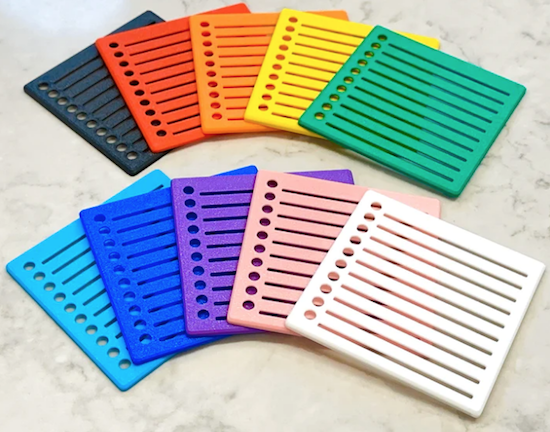
You can also purchase bundles of 5 stencils in two different color schemes, Light (Sky Blue, Royal Blue, Plush Purple, Pretty Pink, and Daylight White) or Dark (Ink Black, Radiant Red, Citrus Orange, Sunny Yellow, and Emerald Green) for $29, or a Deluxe Bundle of all ten for $49. (Unless you’re homeschooling or have oodles of tiny humans, perhaps start with just one stencil, eh?)
Every stencil stencil has 10 lines, and you have the option of using the circular checkbox/radio button in anticipation of marking off completed tasks.
Additionally, while none of the company’s platforms have shown what the reverse of the stencil looks like, it appears that it must be somewhat hollow, as they recommend, “…when you’re not making a new list just flip over the stencil and use it to hold your stack of sticky notes so you’ll always have it at the ready.”
If you like the idea of using a stencil but aren’t sold on a circular check box (likely because boxes really do need to have straight edges), a few Etsy shops, including PrintPalaceXYZ and Vindion, have similar versions with square check boxes, in a similar price range.
MEMO WALLET
A few weeks ago, in Celebrate the Global Day of Unplugging, we talked extensively about the problems of always being connected. We reviewed the dangers of modern connectivity; in particular, we looked at the distractions, dangers to physical health, and the increased stress associated with constantly being plugged in.
The problem is that across these first few decades of the 21st-century, we’ve lost the ability to capture thoughts on-the-go unless we have tiny computers in our pockets. People used to carry notebooks, Harriet the Spy-style to capture flashes of genius. Then, in the late 20th-century but before smartphones, there were Blackberries, PalmPilots, and other personal digital assistants (PDAs), to which people also quickly got addicted.
Indeed, twenty years ago, in 2004, Merlin Mann (founder of 43 Folders and coiner of the expression “Inbox Zero”) promoted the concept of the Hipster PDA, an alligator-clipped stack of index cards.
Initially a joke, Mann’s Introducing The Hipster PDA looked at a way to turn our collective backs on the expensive, theft-prone, and quickly addictive technology.
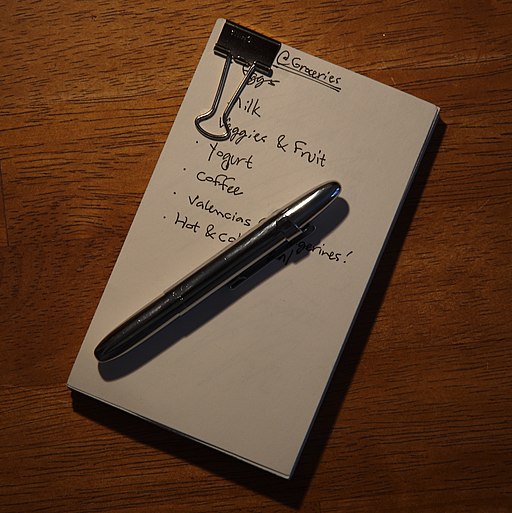
Hipster PDA — CC BY-SA 2.0
The fact that it blended seamlessly with the themes and processes of David Allen’s Getting Things Done was also appealing. People invented templates (and, I’m guessing, stencils), and debated the best types of index cards (lined? graphed? dotted? traditional white or colored?) and enclosures (alligator clips or rubber bands?).
Two decades later, Nyckle Sijtsma of New Things Lab, a Dutch design studio, came up with a spin on the Hipster PDA, a way to detach from technology when out and about and still have the ability to brainstorm, create, write, and remember important things.
Simply put, MEMO Wallet is a distraction-free combination of a wallet and a miniature whiteboard. New Things Lab began MEMO Wallet with a Kickstarter and a goal of 4800 Euro; the effort was so popular that it hit €66,487 of backing in one month!
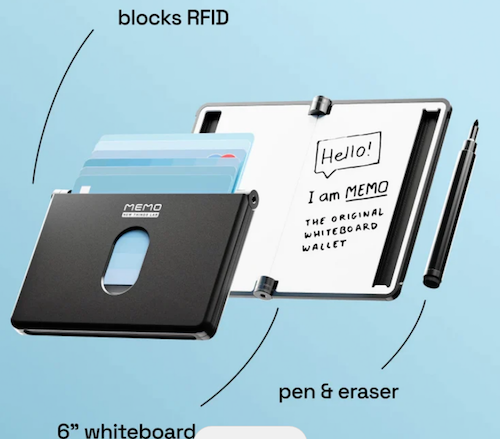
Made from high-quality, precision-grade aluminum 6063 alloy, the MEMO Wallet employs RFID-blocking technology to prevent against card-skimming and has space for securely holding up to six cards, three per side. It measures 4.25″ x 2.91″ x .43″ (108mm x 74mm x 11mm).
The MEMO Wallet has wear-resistant rubber elements to tightly grip cards and prevent unintentional slippage. When you’re ready, just slide your thumb upward against the vertical oval to access your cards.
MEMO Wallet unfolds to reveal a 6-inch (diagonal) pocket whiteboard with a built-in, fine-point dry-erase pen with eraser. The aluminum whiteboard was created with a special heat-curing whiteboard paint to ensure that you can write smoothly on the surface without it squeaking. The pen clicks into place, nesting in the black outer edges of the whiteboard area, so you don’t need an elastic loop. (One MEMO Pen comes with the wallet; additional pens are sold separately in four-packs lasting 18-24 months, depending on usage.)
See the MEMO Wallet in action in just eleven seconds:
MEMO Wallet comes in four colors: Charcoal Black, Slate Grey, Gilded Rose, and a limited edition Revision Red.
Use the whiteboard for anything you’d put in a notebook — To-Do lists, notes, drawings, flow-charts — with confidence that when you fold everything back up, your scribbling will be protected.
Obviously, a whiteboard lacks the (greater) permanence of using a notebook. It’s not going to sync over Wi-Fi or Bluetooth with your devices (since the goal is not to carry any) or with anything back at the office, so it requires intentionality.
Ostensibly, when you return to your home or workspace, you would rewrite anything that was still actionable or snap a photo of what’s on your whiteboard to upload it to Evernote or OneNote to enable optical character recognition for search at a later date.
The appeal is that you can disconnect from technology while reconnecting with your creativity. Without the incessant beeps and buzzes of texts, email, and app notifications, you can use the whiteboard to achieve mental clarity and focus for organizing your creative thoughts.
One wallet is $69; two are $118; three wallets cost $169. If you purchase two or three MEMO Wallets, shipping is free. You can purchase it directly from New Things Lab.
NIIMBOT B21 THERMAL LABEL PRINTER
As a professional organizer, I love talking about the importance of labeling. What you name something helps you remember where to put it, where to find it later, and generally how to think about it in relationship to other things, both categorically and sequentially.
My favorite label maker is the Brother PT-65, which isn’t even made any more. I’ve had it 22 years, since just before I began my professional organizing business.
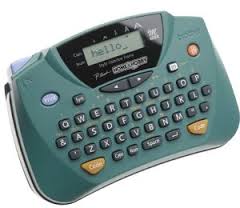
It takes six AA batteries, and although I use it almost every day that I’m with clients, I probably only have to replace the batteries every few years. It’s a workhorse.
Over the years, I’ve tested other label makers from Brother, Dymo, Martha Stewart, and a variety of other manufacturers. Most have their merits and drawbacks, and while I have a few back-ups I’ve received as gifts over the years, I’m sticking with my PT-65 for as long as it will stick with me.
That doesn’t mean I don’t appreciate variations. In September, in Paper Doll Explores New & Nifty Office and School Supplies, I wrote about the PrintRGo thermal pocket printer, which sadly doesn’t appear to be the market right now.

A number of readers contacted me after that post, telling me that they bought the printer and were delighted by it, so I’m happy to see that many other similar miniature thermal label printers have remained on the market, including the Printago, which I’d also mentioned.
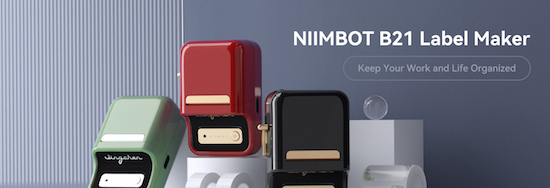
The latest thermal printer that caught my eye (and yes, I first saw it on TikTok, but don’t tell my congressman) is the Niimbot B21. it’s designed to look like mid-20th-century typewriter. The teeny printer comes in green, red, black, and creamy white. (While the other colors are probably more mid-century accurate, the red one is so cool!)
Recapping Paper Doll’s 2023 Posts — Which Were Your Favorites?
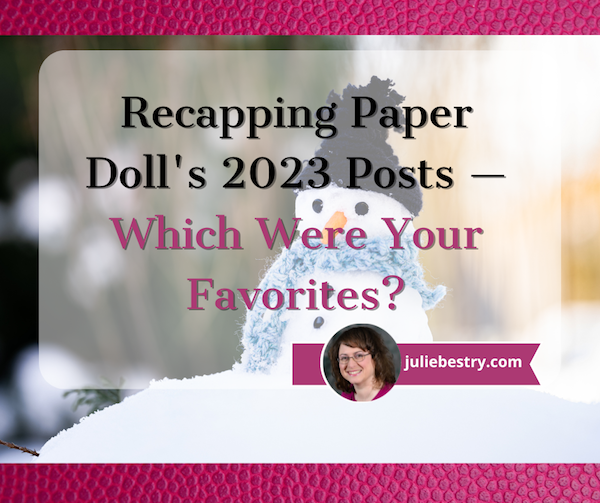
With one week left in 2023, have you taken time yet to review your year?
For the December Productivity and Organizing Blog Carnival, Janet Barclay asked us to identify our best blog posts of 2023, and I had a tough time.
“Best” is subjective, and Janet let us have free reign as to which post fit. Some bloggers chose their most popular posts in terms of readership; others, the ones that garnered the most comments. Some of my blogging colleagues picked their most personal posts, while others selected what they felt would have the most impact on people’s lives.
The problem is that picking just one means leaving the others behind, and I wrote forty-two posts this year! Eventually, I narrowed the selection to half a dozen posts, and then turned to colleagues and friends who were almost evenly split, bringing me no closer to a solution. In the end, I picked Paper Doll On Understanding and Conquering Procrastination because it served as the foundation for so many other posts, but also because I’d been lucky enough to find some great visuals, like this one from Poorly Drawn Lines:
so much to do pic.twitter.com/fiSm7Y2Erg
— poorly drawn lines (@PDLComics) December 21, 2022
Beauty, like clutter, is in the eye of the beholder. To that end, here’s a recap of everything we’ve discussed in 2023, with a few updates and tweaks along the way. My personal favorites are in bold, but I’d love to know which ones resonated the most with you during the year!
ORGANIZE YOUR INSPIRATION
After uploading last week’s post, Toss Old Socks, Pack Away 2023, and Adjust Your Attitude for 2024, I got to thinking about all the different ways we can take our word, phrase, or song of the year and keep it in the forefront of our minds.
I’d reviewed the traditional methods (vision boards, posted signs, turning the song into your wakeup alarm), but felt like there needed to be something that stayed with you, independent of your location. Only being reminded of your goal to be a leader when you’re standing in front of your fridge doesn’t really help you in your 1-to-1 meetings at work. (I mean, unless you’re the Queen of the Condiments or King of the Crisper Drawer.)
Only being reminded of your goal to be a leader when you're standing in front of your fridge doesn't really help you in your 1-to-1 meetings at work. (I mean, unless you're the Queen of the Condiments or King of the Crisper Drawer.) Share on XSerendipitously, within minutes of thinking about this, an ad came across one of my social media pages. (Normally, I ignore ads, but this one had me thinking maybe “serendipity” would be a good theme word for some year!) The ad was for Conscious Ink, an online temporary tattoo retailer specifically for creating body art to help you mindfully connect with your themes and messages to yourself, disrupt negative self-talk, and promote the healthy habits you’re trying to embrace!
As Conscious Ink’s About page explains, if you want to keep something top of the mind, why not try something that keeps it “top of the body?” Whether body art is your thing or you haven’t experimented since your Minnie Mouse temporary tattoo at summer camp <mumble mumble> years ago, this is a neat trick!

There’s even research as to how a temporary tattoo can support permanent emotional and cognitive transformation and improve mindfulness and focus on things that uplift one’s higher self. And that’s the point of a theme word, phrase, or song, to keep you focused on what you want rather than what you allow to drag you down! Manifest what you want your life to be.
Conscious Ink’s temporary tattoos use non-toxic, cosmetic-grade, FDA-certified, vegan inks. Each one lasts 3-7 days, depending on where you apply it, your skin type and activity level, and (I suspect) how many life-affirming, stress-reducing bubble baths you take. Categories include mindset, health and wellness, spiritual/nature, relationships, parenting, celebratory, and those related to social causes. Prices seem to hover at around $10 for a three-pack and $25 for a 10-pack. There’s even a Good Karma Guarantee to make sure you’re satisfied.
Whether you go with Conscious Ink (which is designed for this uplifting purpose) or seek an alternative or custom-designed temporary tattoo (through vendors like Momentary Ink or independent Etsy shops), it only makes sense if you place it somewhere you can see it often.
After all, if you place a temporary tattoo reminder to stand up for yourself on your tushy, it probably won’t remind you of much. For most of us of a certain age, putting it at our wrists, covered (when we prefer) by our cuffs, will give us the most serene “om” for our buck.
If you place a temporary tattoo reminder to stand up for yourself on your tushy, it probably won't remind you of much. Share on XAlong the same lines as my advice on adjusting your attitude for 2024, you may want to consult Gretchen Rubin’s Tips for Your “24 for 2024” List. Rubin and her sister/podcast co-host always have an inspring Happier Trifecta: a year-numbered theme, along with with a challenge and a list.
PRODUCTIVITY AND TIME MANAGEMENT
This was a big year for productivity discussion. I’m a firm believer that keeping your space and resources organized is key to being productive. However, it’s hard to keep the world around you organized when outside influences prevent you from being efficient (doing things well) and effective (doing the right things).
We continue to see the value of body doubling, whether through friendly hang-outs, co-working (virtually or in person), or professional organizing services, whether you want to conquer garden-variety procrastination or get special support for ADHD.
Partnering for Success
Paper Doll Sees Double: Body Doubling for Productivity (I almost submitted this post to the carnival. Accountability and motivation for the win!)
Paper Doll Shares 8 Virtual Co-Working Sites to AmpUp Your Productivity
If you’d like to explore the body doubling or co-working experience, friend-of-the-blog Deb Lee of D. Allison Lee is offering a no-cost, two-hour Action Day event on Tuesday, January 9, 2024, from 10 a.m. to 12 p.m.

This event is designed for her clients and subscribers, but after a cheery holiday conversation, Deb said it was OK to let my readers know about the opportunity.
Deb describes an Action Day as “personal training for your productivity muscles!”
An Action Day (especially as Deb runs them) is a stellar way to narrow your focus and start taking action on your goals. (And what better time than at the start of the new year?) You’ll get to connect with others who are also working on goals and habits with the support of Deb, a productivity coach I admire and adore.
Just bring your top two or three priorities, and you can conquer anything, like:
- organize your workspace
- write your book outline
- clean up your digital files
- test a new productivity app
- send out client proposals
- anything!
You’ll videoconference with a small, select group via Zoom. Share your goal and tasks, work for the bulk of the two hours, and then take time to debrief and share your successes!

Moving Yourself Forward
Getting anything done involves figuring out what you have to do, knowing what’s kept you from getting started, making it easy for you to begin, and celebrating even the smallest wins. These next three posts were where the magic happened this year!
Paper Doll On Understanding and Conquering Procrastination (This is the post I submitted to the Productivity & Organizing Carnival.)
Frogs, Tomatoes, and Bees: Time Techniques to Get Things Done
Use the Rule of 3 to Improve Your Productivity
Dealing with the Pokey Times
If you’re overwhelmed by all you’ve got going on during late December and early January, you can skip onward. However, if your workplace closes down during the holidays, or your professional and personal lives just feel like they’re kind of in a slump right now, you may find some inspiration in two pieces I wrote for the summer slowdown.
The weather outside may be frightful (unless you’re reading from Australia), but if you are looking for ideas to pump you up when everyone is in a post-shopping/meal/travel haze, these posts may stir your motivation:
Organize Your Summer So It Doesn’t Disappear So Quickly
Use Your Heart, Head, and Hands to Organize During the Slow Times
Try To Do It All (And Knowing When to Step Away)
Maybe you did your annual review and found that you’re feeling burned out. If so, you are not alone. It’s easy for your groove to turn into a rut, and for all of your drive to accomplish come crashing down because you never take your foot off the gas all year!
If you missed these posts earlier need a second shot at embracing the importance of variety, small breaks, and actual vacations, here’s your chance to read some of my absolute favorite posts of the year:
Paper Doll Says: Don’t Get Stuck in a Rut — Take Big Leaps (Be sure to watch the diving board video!)

Was baby Paper Doll burned out? In a rut? Just pooped?
Take a Break — How Breaks Improve Health and Productivity
Take a Break for Productivity — The International Perspective (This is the post that introduced the Swedish convivial snack break, fika!)
If you had any doubts about what I said about the importance of taking breaks in your day to refresh your body, your brain, or your spirit, a new report just a few weeks ago confirms that we need that late afternoon break if we don’t want our productivity to turn to mush! And the more we push ourselves beyond work hours, the greater our decrease in productivity!
If you’re desperately in need of a full break, but are suffering from decision fatigue and don’t have the energy to begin planning a whole vacation, there are options to make it easier for you. In the BBC’s piece, Why 2024 May Be the Year of Surprise Travel, you may find some rousing options.
Need a little inspiration to spend your holiday gift money on experiences rather than tzotchkes? Check out Time Out’s 24 Best Things to Do in the World in 2024 to envision where you could take long breaks to refresh yourself. Those vintage trains in Italy are calling to me, but perhaps you’d prefer the immersive “Dream Circus” in Sydney, Australia, or Montréal en Lumière’s 25th anniversary?
(Never mind, I know. Everyone wants to go on the Taylor Swift cruise from Miami to the Bahamas. Just come back with good stories instead of memento clutter, OK?)
TOOLS AND IDEAS FOR GREATER PRODUCTIVITY
Sometimes, rereading my own posts reminds me how many nifty things there are to share with you, and how many are still to be discovered.
Paper Doll Helps You Find Your Ideal Analog Habit Tracker — So many people have requested a follow-up covering digital habit trackers, so watch for that in 2024.
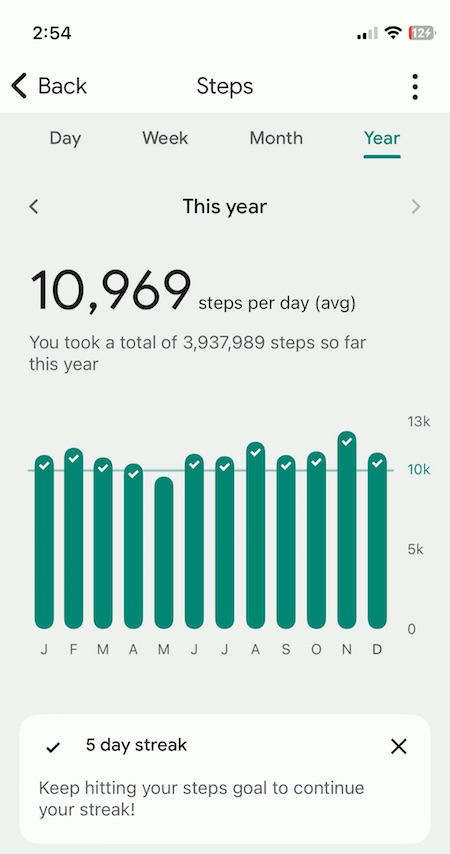
Paper Doll Presents 4 Stellar Organizing & Productivity Resources
Paper Doll Shares Presidential Wisdom on Productivity — From the Eisenhower Matrix to Jefferson’s design for the swivel chair, from limiting wardrobe options to understanding the difference between being busy and being productive, we’ve had presidents who have known how to get more (of the right things) done. With an election year in 2024, I’d love a debate question on the candidate’s best tips for staying organized and productive!
Surprising Productivity Advice & the 2023 Task Management & Time Blocking Summit
Highlights from the 2023 Task Management & Time Blocking Summit
3 Simple But Powerful Productivity Resources — Right in Your Browser Tab — The offering that got the most attention this year was definitely Goblin.Tools. I’m sure that as we head into 2024 and beyond, I’ll be sharing more resources that make use of artificial intelligence.
Let’s just remember that we always need to give precedence to our own intelligence, in the same way we can’t follow GPS to the letter if it directs us to drive in to a lake. In fact, like all organizing and productivity guidance, remember what I said way back in 2020 in The Truth About Celebrity Organizers, Magic Wands, and the Reality of Professional Organizing: there is no magic wand.
AI and other solutions, tangible or digital, and even professional organizers, can make things easier, but the only way to get the life you want is to embrace making positive behavioral changes.
RESOURCES FOR ORGANIZING YOUR WORK AND TRAVEL SPACE
Privacy in Your Home Office: From Reality to Fantasy — It’s interesting to see that privacy, and not just in home offices but in communal workspaces, has become a priority again. Check out this recent New York Times piece, As Offices Workers Make Their Return, So Does the Lowly Cubicle.
Paper Doll Refreshes Your Paper Organizing Solutions
Paper Doll Organizes Temporary Papers and Explores Third Spaces — Do you have systems for dealing with your “temporary papers,” the ones that you don’t need to file away but aren’t triggering an immediate action?
Paper Doll Organizes Your Space, Money, and Well-Being While Traveling
Paper Doll is Clearly Organized — Translucent Tools for Getting it Together
Paper Doll Explores New & Nifty Office and School Supplies
Organize Your Desktop with Your Perfect Desk Pad
No matter where I go in 2024, be assured that I will be keeping my eyes open for solutions for keeping your paper and work supplies organized.
My Thanksgiving weekend shopping trips brought me a variety of intriguing options. At Kohl’s, I saw 30 Watt‘s Face Plant, a way to keep your eyeglasses handy while refreshing the air around you (and keeping you perky) with greenery. The 5.5″ x 6″ x 5.25″ ceramic planter holds a plant, gives you a place to rest your glasses (so you won’t misplace them under piles of paper on your desk), and is dry erase marker-friendly! (It’s currently on sale for under $14.)

A stop at IKEA in Atlanta was so productive for organizing tools that you’ll be seeing posts with nifty names like Övning (for tidying a child’s desk accessories and creating privacy), Kugsfors (wall-mounted shelves with tablet stands for keeping books and iPads visible while working), Bekant (sit/stand desks) and more.
ORGANIZING YOUR FINANCIAL & LEGAL LIFE
Not everything in the organizing and productivity world is fun to look at, and that’s especially true of all the financial and legal documents that help you sleep soundly at night. Still, Paper Doll kept you aware of how to understand and protect your money, your identity, and your legacy.
Speaking of which, if you haven’t created your Apple Legacy Contact and your Google Inactive Account Manager, why the heck not? Use the power of body doubling up above, grab a partner, and get your digital life in order!
Lost & Found: Recover Unclaimed Money, Property, and Savings Bonds
Paper Doll’s Ultimate Guide to Legally Changing Your Name
Paper Doll Explains Digital Social Legacy Account Management
How to Create Your Apple & Google Legacy Contacts
Paper Doll Explains Your Health Insurance Explanation of Benefits
DEALING WITH EMERGENCIES AND STRESSFUL SITUATIONS
Sometimes, I write a post I wish I’d been able to read earlier (like the one on preventing and recovering from a car theft). Other times, like when a friend had a health emergency, or when Paper Mommy had her fall in November, I’m glad the posts already exist. If you missed these the first time around, please be sure to read, share, and bookmark them; think of them as an insurance policy, and let’s hope you won’t need them.
How to Organize Support for Patients and Families in Need
Organize to Prevent (or Recover From) a Car Theft
Paper Doll Organizes You To Prepare for an Emergency
GRAB BACK OF INTERVIEWS, UPDATES, AND PHILOSOPHY
Paper Doll Interviews Motivational Wordsmith Kara Cutruzzula
You already know how beloved my friend Kara Cutruzzula‘s Brass Ring Daily newsletter and Do It Today podcast are at Paper Doll HQ.
After having read and enjoyed Kara’s Do It For Yourself — A Motivational Journal and her follow-up, Do It Today — A Motivational Journal (Start Before Your Ready), I had no doubt that I’d be jumping on her third when it was released in September.
If you haven’t already picked up Do It Or Don’t — A Boundary-Creating Journal, use that Amazon money you almost certainly got this holiday season!
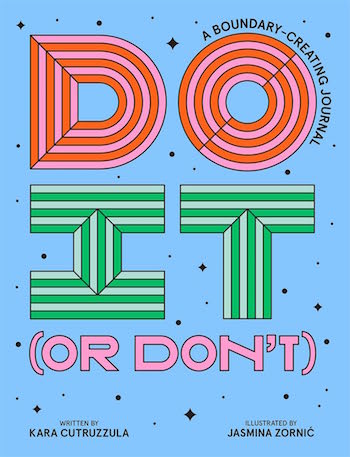 One of the Paper Doll themes for 2024 will focus on setting (and maintaining) better boundaries to accomplish more of what’s meaningful, and I’ve got multi-color tape flags sticking out of Kara’s book from all the chapters to share her bounty with you.
One of the Paper Doll themes for 2024 will focus on setting (and maintaining) better boundaries to accomplish more of what’s meaningful, and I’ve got multi-color tape flags sticking out of Kara’s book from all the chapters to share her bounty with you.
What’s in a Name? “Addressing” Organizing and Productivity
Paper Doll Suggests What to Watch to Get More Organized and Productive — As we head into the new year, I’ll be keeping my eyes open for podcasts, webinars, and TV shows to help you keep your space organized, your time productive, your finances orderly, and your life joyous. Readers have been sending in YouTube and TikTok videos that inspire them, so please feel free to share programming that you’d like to see profiled on Paper Doll‘s pages.
Paper Doll on How to Celebrate Organizing and Productivity with Friends
Paper Doll and Friends Cross an Ocean for Fine Productivity Conversations
From in-person get togethers with frolleagues (what my accountability partner Dr. Melissa Gratias calls those special folks who are both friends and colleagues) to Friday night professional organizer Zooms, accountability calls, and Mastermind group collaborations, this has been a great year for staying connected and sharing the benefits of those conversations with you.
I also loved guesting on so many fun podcasts related to organizing, productivity, technology, and more. If there’s someone you’d like to hear me debate or banter with, let me know!
SEASONAL POSTS
Spooky Clutter: Fears that Keep You from Getting Organized
Paper Doll’s Thanksgiving Week Organizing and Productivity Buffet
Paper Doll De-Stresses Your December
Paper Doll on Clutter-Free Gifts and How to Make Gift Cards Make Sense
Are you stressed out because you haven’t gotten someone a gift yet? Maybe a good start would be to help an overwhelmed special someone take my advice about going on a travel break. Consider gift certificates for something like Get Your Guide, with opportunities to get guided tours of locally-vetted, expertly-curated sporting, nature, cultural, and food experiences. With 118,000 experiences in 150 countries, pick a multiple of $50 or set your own amount, and your recipient can pick the domestic or international travel experience that fits best.
If you know your recipient will be traveling by rail, consider a gift card for Amtrak or ViaRail in North America. Eurail doesn’t sell gift cards, but you can pay for a pass, or buy a gift card for a rail pass for more than a dozen specific European train lines. And if you’d like to help someone organize vacation serenity and secure a bundle of travel attractions for a given city, try TurboPass in Europe or City Pass and The Sightseeing Pass in North America.
HERE’S TO A MORE ORGANIZED AND PRODUCTIVE 2024
Whether you’ll be spending the next few days reading, traveling, or doing your annual review, I hope this last week of 2023 is a happy and healthy one.
To send you off for a cozy week, I’d like to share a Whamagaddon– and Mariah–free, retro 100-minute holiday playlist from the late 1930s through the early 1960s. It’s somehow easier to dismantle the tree and write thank-you notes to Guy Lombardo. (My favorite clocks in at 52:42 with “What Are You Doing New Year’s Eve?”)
Please let me know your favorite Paper Doll posts from this year, and I’ll meet you back here in 2024!
Organize Your Desktop with Your Perfect Desk Pad
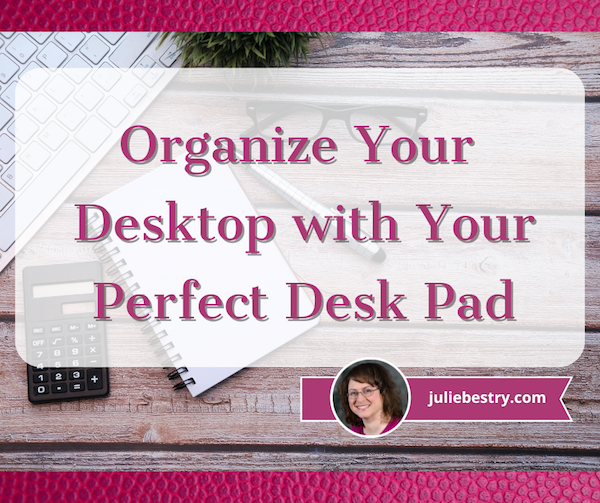
WHY USE A DESK PAD?
It’s funny how small, random things resonate with people. In early September, in Paper Doll Explores New & Nifty Office and School Supplies, I included a small section on how desk pads have come back into vogue, and shared some examples of brightly colored, inexpensive options. I’ve been surprised by how many people had follow-up questions about this rarely discussed office supply.
Desk pads are similar to but not quite the same as desk blotters, even though the two are often conflated. However, as we’re not writing with quills or fountain pens anymore, nobody is really blotting anything. Still desk pads have a variety of benefits for organizing your desk physically as well as psychologically.
Desk pads have a variety of purposes. A desk pad will:
- Protect the desk from spilled beverages, sticky or crumbly foods, and scratches (either from your watch or jewelry, or from pens that dig into the desktop surface).
- Create a more comfortable workplace. This includes making the traditional writing surface smooth for when you’re actually using pen or pencil (like a caveman) or protecting your arms from the desktop’s surface. If your desk is metal or glass, the surface can be ice cold; an old wooden desk may feel scratchy or splintery. Desk pads vastly improves your comfort level because they’re generally made from softer or sleeker materials. This also provides a gentler surface to reduce friction against your wrists.
- Yield more slide-y space than a mousepad. Whether you’re using your desktop for working or gaming, a mousepad offers little space to slide your mouse around. A desk pad makes that smooth area much wider and eliminates your worry about making grander gestures.
- Reduce the sound and vibrations of a clickety mechanical keyboard.
- Designate zones for different tools. Some desk pads give you specific areas to help carve out the niche areas of purpose on your desk.
- Make a statement of style for the owner of the desk, to communicate personality with visitors and to delight you when you’re sitting at your workspace. Given that most of day’s post focuses on more mature styles of desk pads, in leather and and leather-like materials, I thought I’d share the kind of desk pad that the less grown-up version of me is often tempted to acquire. Because, as you may have wondered at some point, Surely Not Everyone Was Kung Fu Fighting (from Society Six).
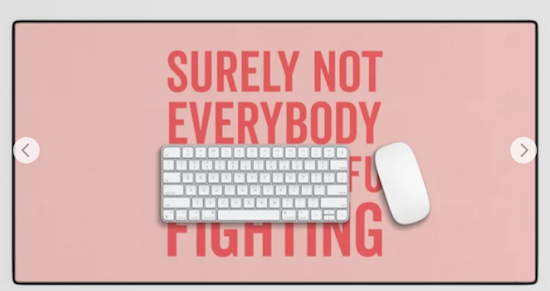
DESK PAD ATTRIBUTES TO CONSIDER
Most of the inquiries I received asked about what features they should consider in a desk pad. For those used to the traditional oversized calendar style of blotter, the number of modern desk pad possibilities come as a bit of an overwhelming surprise. Let’s look at several.
Size
One hesitates to say that “size matters,” but you need to consider a variety of size-related elements:
- How large is your work area? — If your desk is enormous and you’ve got an itty bitty desk pad not much bigger than a mousepad, the desk pad is going to be engulfed, both logicically and aesthetically. If it’s only the width of your keyboard, the friction of the edges against your arm may annoy you.
Conversely, if you’re working on a tiny desk, make sure your desk pad will actually fit. Read the actual measurements, but also keep your eyes out for keywords, like “extended,” that give you an idea of the size of a product. A standard goal is to pick a desk pad that covers 2/3 of the width of your desk, but your needs may vary, given other factors.
- How much of your stuff do you want on the desk pad? — Do you want the deskpad to cover just the area closest to you, or would you prefer your computer to sit atop it? If you want your desktop and keyboard located on top of your deskpad, you’ll need more space than if you just want to put it under your laptop (or just prefer it under the area where you rest your arms).
Some desk pads are designed to be large enough to have space for your phone, mouse (so a mousepad is unnecessary), office supplies, and any papers essential to your work.
- What kind of surface do you need for your work functionality? — If you’re using a mouse instead of a track pad and a desk pad in lieu of a mouse pad, the mouse needs to be able to move smoothly but not slip on too glossy a surface. The surface should also allow you an adequate, comfortable area upon which to rest your mousing wrist.
- Do you need a desk pad to accommodate a special purpose? — Gamers often use oversized (overly wide) desk pads; engineers and computer specialists may need specialized pads for work on computers or with tools.
- Do you need options? There are varieties of desk pads with different surfaces on each side (like for gaming vs. standard computing or intricate work vs. writing). If your work and play tasks vary widely, consider looking at dual-dided pads to make sure you’re comfortable. A distracted worker is an unproductive worker.
Think about width as well as depth of your desk (and desk pad) as you look at your purchase options.
Materials
The material from which your desk pad is constructed will impact how it looks, how long it will last, and how much it will cost. Common desk pad materials include:
- Leather looks sumptuous and sophisticated, is easy to keep clean, and tends to be durable over the long term. However, it is often one of the most expensive options.
Leatherology has a wide variety of classic and modern desk pad options, but they also have some spiffy extra-long desk pads and narrower “conference and laptop” pads. They’re all in gorgeous Italian leather and are (for real leather) fairly affordable, from $95 to $170. Even their colors sound luxurious, with Bordeaux (below), Oxblood, Mocha, and Dove mixing with Tan, Black, Midnight Blue.
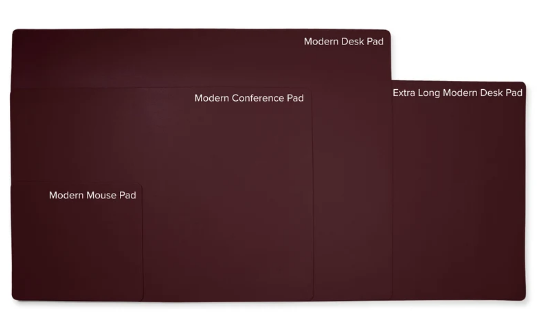
Grovemade is a similarly delicious vendor of 3.5mm-thick premium leather desk pads with cork backing in six sizes: Small – 11” x 24.75”, Small Plus – 14″ x 31.5″, Medium – 11.5” x 38”, Medium Plus – 15.75″ x 38″, Large – 26” x 38.5”, and Extra Large – 26.5″ x 49″. Small, medium & medium plus provide room for an external keyboard and mouse, while Large is designed to work under the Grovemade Monitor Stand and Laptop Stand. Prices range from $110 to a whopping $400!
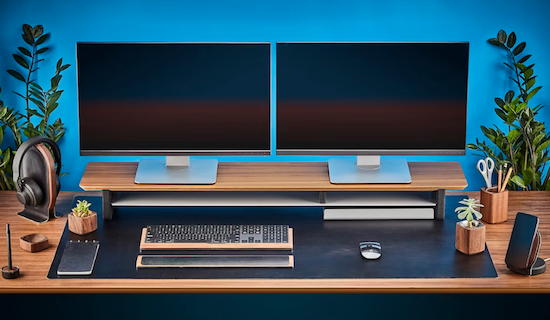
Of course, leather can get incredibly pricey. Smythson of Bond Street’s Large Desk Mat in Panama (available in Black or Sandstone) runs a hefty $1095!
- “Vegan” leather is what we used to call vinyl. It’s durable, though not so much as real leather, but it avoids the whole Bambi’s mother issue. You will sometimes see this described as “Eco” leather. If you’re not spending in the $100s, you’re almost assuredly not seeing a leather pad.
- Plastic or PVC vinyl is inexpensive, but may feel cold against your arms, can split or crack over time, and likely won’t last as long as some other varieties. That said, whether clear or opaque and colored, plastic surfaces are usually easier to clean and ideal for people who tend to stain their horizontal surfaces with coffee cup rings.
- Wool/Felt provides a cozy, hygge look, but can feel itchy or scratchy to your arms. (If you’re buying a wood desk pad as gift, make sure your recipient doesn’t have wool allergies.) Of course, a mouse will not slide on wool so you’ll still need a mouse pad, and you’re not really going to be able to handwrite on it unless you’ve got a notebook or want to fuss with cardboard backing while drafting your thank you notes.
If you’re up for spending $94 on some wool that you can’t even wear on date night, Graf Lantz has a sophisticated Mosen Large Merino Wool Felt Desk Pad measuring 31” wide x 19 ½” high in seven colors (Espresso, Mahogany, Orange, Granite, Charcoal, Marine, and Sage.
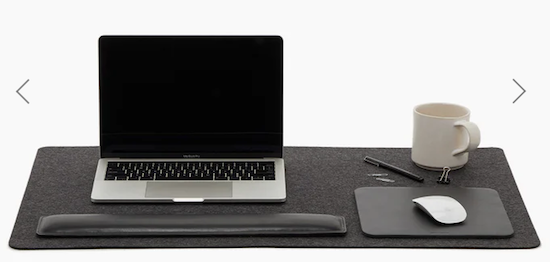
- Microfiber or Polyester — These materials tend to be relatively thin, on to top of spongy backing, making it hard to write with pencil or ball point pens, and can be hard to keep clean over the long run. These range from lower-end options to more fancy-pants versions, like the Harber London Microfibre Minimalist Deskmat, available in three sizes, from about $60-$84, from the UK.
- Cork — For example, IKEA’S minimalist Susig, measuring 17 3/4″ by 25 1/2″ is made of cork, which repels dirt and water. It’s only $8.99. Bear in mind that cork can have a strong odor, as anyone who’s ever purchased a new bulletin board will know. Buyer beware.
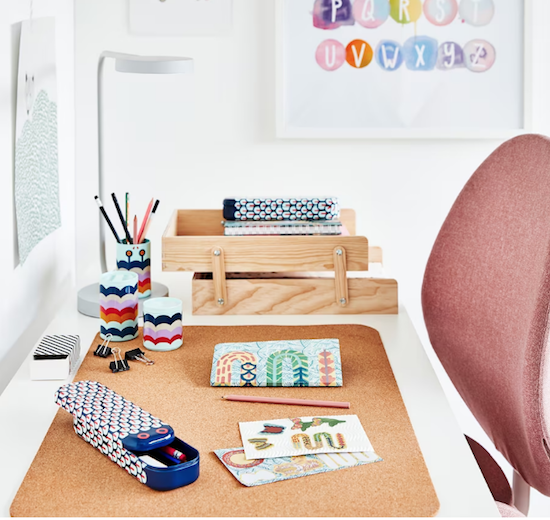
- Linoleum is an atypical options, but Grovemade makes them from linseed oil, natural pine rosin, wood flour, and calcium carbonate, with a cork backing, in ten different colors. They resist fingerprints and are antistatic and durable.
- Aluminum or Copper desk pads provide anti-static attributes. These metals have conductive properties, and will protect your computers and electronic equipment from static electricity. If you work around equipment that’s sensitive to static, like in a computer lab or server room, this is something to consider.
- Marble, glass, acrylic — These atypical desk pads are going to be cold, heavy, and slippery, but easy to clean.
I’d recommend against these icy materials unless you are far more into aesthetics than computing, but the Pottery Barn White Marble Desk Blotter may put you in “fancy society matron” mode. It comes in 24″ wide by 18″ high for $79 or 36″ wide by 18″ high (pictured below) for $99 and can be personalized.
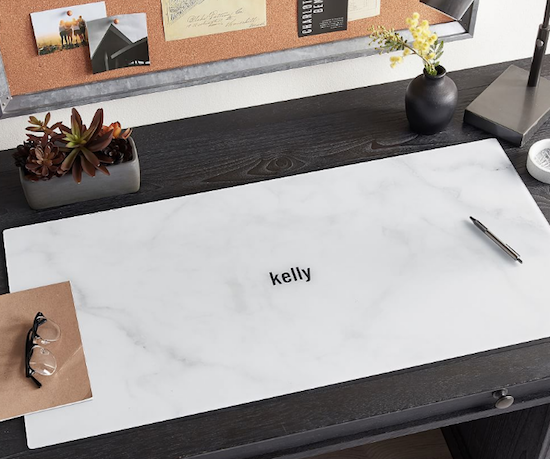
As you examine your options, ask yourself, will this material deflect spills? Morning Starbucks? Afternoon Starbucks? Late night pizza grease?
Leather and vegan leather are sumptuous, but will they withstand ink stains and the pressure of a ball point pen?
Do you need gutters (indentations) for pens or cord organizers or side panels on the edges to give you a sense of boundaries (and let you tuck in note cards)?
Whatever material you choose will reflect your personal style. Select something that uplifts and inspires you (or at least doesn’t frustrate you) when you approach your desk.
That said, consider that how you organize your desk reflects on your office mates or your employers. There’s some wiggle room, but if your desk pad quote Jean-Jacques Rousseau’s Eat the Rich! but you work at a high-end accounting firm, you may encounter some conflict.
Grip/Traction
A super slick desk surface such as one made of metal or glass will improve your mousing capabilities but may make it hard for you to keep things from rolling away. A good desk pad has backing that provides traction for keeping your keyboard from jiggling, your pens from rolling, and your podcast microphones from sliding away.
Think about how the backing material will affect the grippiness of the pad on the desk’s surface. Look for a desk pad with backing that’s sufficiently rubbery to keep the desk pad from sliding around, but not something so inexpensive that it will get sticky or goopy near a heater or in direct sunlight as the years go by.
You also want a smooth top surface for writing, but not so smooth that your keyboard will slide around.
Organization
Psychologically, a desk pad has a calming, centering effect, much like a tablecloth or table runner in a home, dissuading you from piling junk or excess materials in your space. A desk pad also helps you create zones, both on the pad and around the perimeter. You might find yourself keeping resources on the back third of the desk, beyond the far edge of the depth of the pad, or papers to the left of the pad and your phone and gadgets to the right.
Let your desk pad support your organizational structure, and you might find that it supports your physical as well as cognitive sense of order.
Design Aesthetic
Design also has both a functional and psychological impact.
Functionally, the design and manufacture of your desk pad can affect your comfort while you work. Those with some extra padding may be more comfortable under your arms while you’re typing. Of course, you don’t want a pad so thick that it adds bulk or adversely impacts your ergonomics. And, as mentioned, size will matter if you’re trying to create a sleek, uniform look on your desk.
Aesthetically, the combination of materials, colors, and styles determine whether your desk pad looks:
- Professional — Let’s define this to mean anything from serene to stuffy, but generally appropriate for an attorney’s office or anywhere you’re expected to dress conservatively for work.
- Sleek, modern, minimalist — If the bulk of your workspace is glass, metal, or full of spare IKEA-styled wooden furniture, you’ll want a desk pad that sets a similar tone.
- Activist-oriented — Does everything in your office convey a written message? Is your tone political (in the wider use of the term)? You may want a bold look.
- Too Cool for School — If you’re working with younger people (by which I mean adults younger than you, as parents may bristle at middle school guidance counselors decorating with edgy messages), you may want a more youthful, expressive style to maintain integrity.
- Personal — Whether you want Barbie pink or a Darth Vader Sith Lord desk pad from NovelKeys, in the end, you need to ask: does the desk pad fit your tastes? If not, you’ll never feel entirely at ease at your desk.
In the end, this is a desk pad, not a wedding dress. Pick a color, pattern, and material that reflects your style insofar as you’re allowed to express your true style at work.
And if you find the perfect desk pad but expect it will be received poorly at work, use it in your desk area at home — and start looking for a job that won’t stifle your soul.
Portability
If you set up a desk once and never remove anything, this won’t be a concern. However, if you hot-desk at your office, or if you’re a student who relocates to different work areas and likes your desk pad to come with you, portability may be an issue.
Some desk pads easily roll up like small yoga mats and you can keep them rolled with a rubber band or yoga mat band. Conversely, some fancy-pants desk pads, the kind made to emulate old-fashioned leather pads, are not only stiff and unrollable, but are often weighted heavily on the left and right edges and not ideally portable.
Special Features
A desk pad is not always just a desk pad, especially in the 21st-century. Some, like the KeySmart Charging Taskpad have charging capabilities. Measuring 35.43″ x 16.54″, in comes only in black. What it lacks in panache, in makes up for in features.
The KeySmart Charging Task Pad has built-in wireless charging capabilities. You can just set your phone, Airpods, or other doohickies on the mat and they will charge quickly, even when in their cases. It’s also water- and stain-resistant, and anti-scratch, with a no-slip-backing and PU Leather surface. There’s a “micro-textured mouse pad built in, with cushioning for wrists and forearms. It’s $120 from KeySmart and currently on sale at Amazon for $69.
Gaming keyboards like are built with colorful, lighted margins to help set the ambiance. For example, see the Razer Goliathus Chroma line, which runs $54 at Warmart and Amazon for the extended version. (You may want to turn down your volume if you’re over 30 years of age.)
Price
Do you want to make a long-term commitment to one desk pad or “date” around with different options depending on your mood of the week? The more committed, the higher a price point you can embrace. I’ve seen desk pads ranging from $10 to $200, so you should be able to augment your work space at a cost that works for you.
A FEW MORE DESK PAD EXAMPLES
Smead Desk Pads
Just as I was considering writing this blog post, I got an email from one of my favorite companies to recommend about the brand new Smead Desk Pads. The waterproof surface, described as being crafted from “premium vegan leather,” has a sturdy design to protect against keyboard scratches, water marks, and spills.
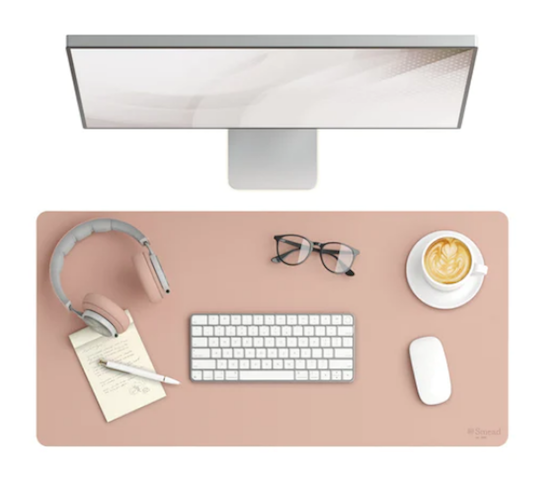
Smead notes that the faux-suede, non-slip backing will ensure stability, so it won’t wiggle while you work or write. They stated that it comes rolled for easy shipping but will lay flat without curling once it’s on your desk.
The Smead Desk Pads come in three sizes:
- Small (23.6″ x 13.7″) for $10.49
- Medium (31.5″ x 15.7″) for $12.99
- Large (36″ x 17″) for $14.99
and five colors: Blue, Dusty Rose, Saddle, Sandstone, and Charcoal.

If you’re seeking a serene, serious, vibe, like for the office of a therapist or ADHD coach, this might be ideal.
OrbitKey Desk Mat
The OrbitKey Desk Mat comes in Black or Stone, in two sizes: Medium (27.01″ wide x 14.69″ high) and Large (35.28″ wide x 16.65″ high). It’s made of premium vegan leather and 100% recycled PET felt and comes with a two-year warranty.
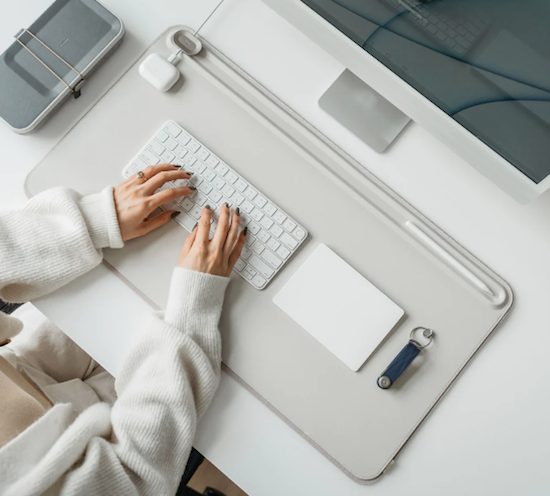
The OrbitKey Desk Mat has some intriguing features, including:
- a quick-access indented toolbar across the top
- a magnetic cable organizer
- a document hideaway feature, suitable for keeping your cheat sheet formulas and codes, or sensitive papers you need at your fingertips
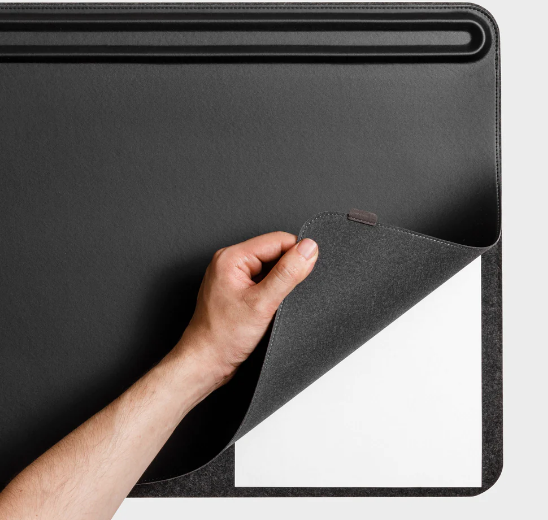
It’s also somewhat pricey (at just under $80 for Medium or $100 for Large) from OrbitKey and Amazon.
Adir Professional Reversible Self-Healing Cutting Mat
Adir’s dual-sided green and black desk pad is made of “self-healing” vinyl and comes in four sizes: 12′ x 18″ ($15), 18″ x 24″ ($25), 18″ x36″ ($45), and 36″ x 48″ ( $76) from Amazon. If you’ve got someone on your shopping list whose desk is equal parts computer desk and work bench, this option will “self-heal” if an art or mat knife or rotary cutter slices through it, keeping the surface smooth. It’s marked with 0.5 inch, as well as measurements in centimeters and millimeters, 45- and 60-degree angle guides, and diagonal cutting lines.
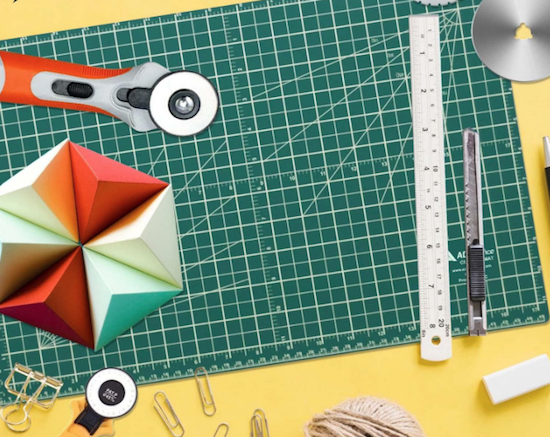
Excel Tips Deskpad (and Morning Brew)
This is actually two recommendations in one. Do you subscribe to the Morning Brew newsletter? It’s a stellar daily newsletter for catching up on all the (mostly non-stressful) national, international, business, and entertainment news delivered in a delightfully Dad-joke tone to make starting your day easier.

If you spend too much time on Microsoft Excel, you might want to look at the Morning Brew Excel Tips desk pad. It measures 27.20″x11.75″ and provides more than 60 Excel functions, 100+ Excel shortcuts, and top dialog box definitions, all for $35.

Paper Doll hasn’t had the opportunity to use and rank most desk pads, so you may wish to peruse recent coverage of the best of desk pads for 2023.
9 Best Desk Mats of 2023 for a More Organized Workspace (Good Housekeeping)
The 10 Best Desk Pads to Elevate Your Workspace (The Robb Report)
The 11 Best Desk Mats of 2023 (The Spruce)
The 12 Best Desk Pads to Make You More Productive and Organized at Work (Esquire)
The 15 Best Desk Pads For Your Home Office (GearMoose)
21 Stylish Deskpads and Blotters for Writers (Accessory to Success)
The Best Desk Pads & Mats for Your Office (Werd)
Do you use a desk mat? What are the most important features for you to work comfortably?


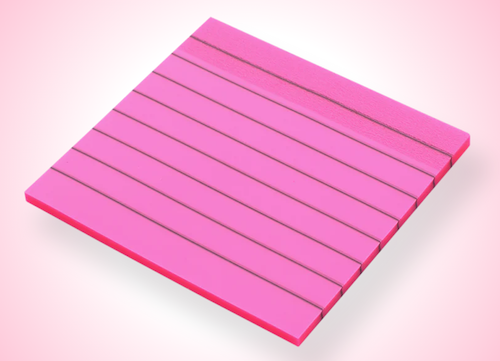 (I’ve yet to figure out how TikTok Shop advertisers and companies like Temu and Shein can afford to price their products so low. Caveat emptor.)
(I’ve yet to figure out how TikTok Shop advertisers and companies like Temu and Shein can afford to price their products so low. Caveat emptor.)

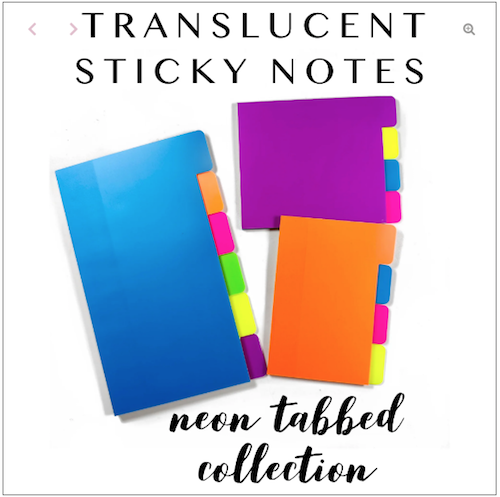






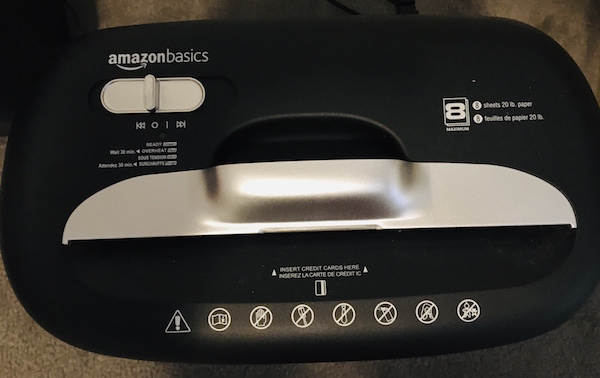
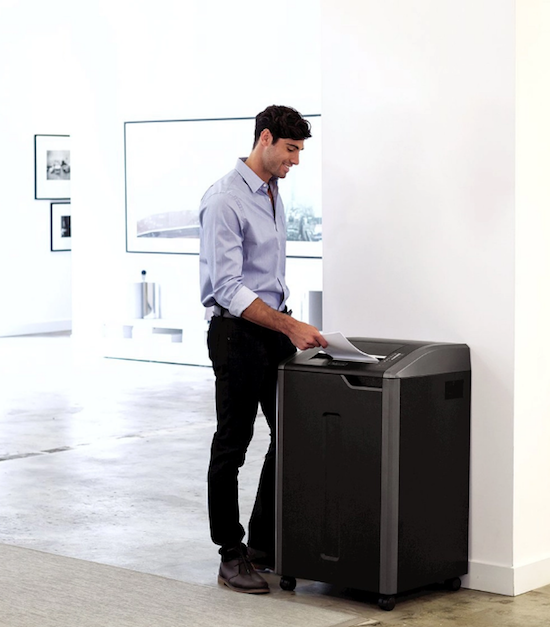

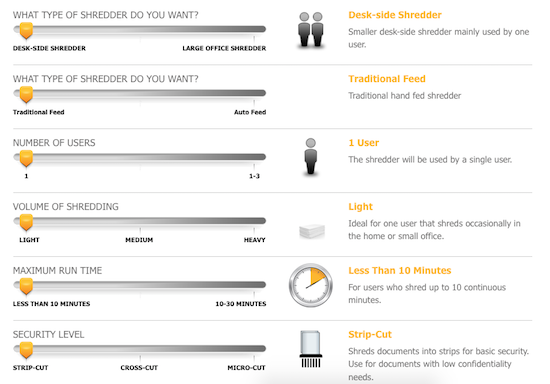
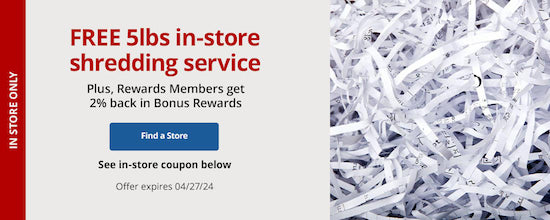
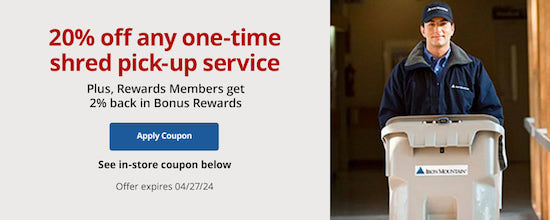
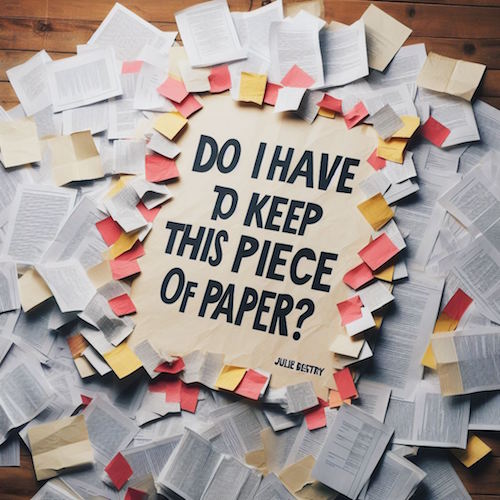

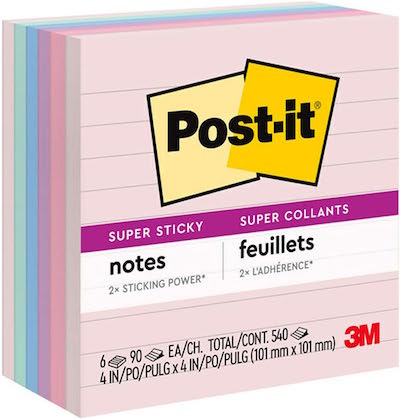

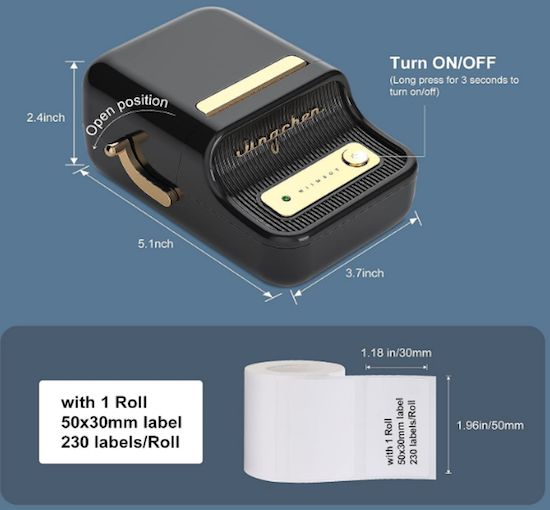



Follow Me